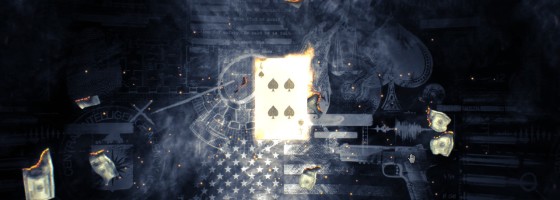Wrapping up your video game with an effective endgame is no easy task. Ending a title on a high note can be a tall order, and in some cases, we have seen games that don’t want to end. For today, we’re going to talk about the three ways designers can finish up their games.
Fixed:
A fixed ending is the most traditional of the three. For any linear game, be it story driven or gameplay, there has to be an end. With that said, designers can still mess up at this part.
The endgame has to be the final test of your game, or where the hardest forms of your game design exist. There should be a fundamental difference in how someone plays your title at the start, midpoint and end.
Too often game developers will either spike the difficulty curve making the game frustrating to finish, or leave things too similar and it just feels like an extended mid-game. With that said, figuring out how hard or easy to make the endgame is up to you.
For narrative-focused games the endgame is obvious: You have to wrap up your story. A good story is given enough time to breathe without overstaying its welcome. For every kind of design we could talk about creating an endgame and be here all day.
Over the years, we have seen designers try to keep things running thanks to the games as a service model.
Scaling (or Endless):
To capitalize on games built with abstracted RPG systems, designers can go with a scaling endgame. Instead of ending the game at a fixed point, the game can keep going as long as the same content continues to scale.
Titles like The Division implemented a gear rating system that allowed them to keep using the same weapons and models, but increase their stats the more someone plays. By continuing to grow the power curve, it is possible to keep someone playing way beyond the end of the normal content.
The problem with a scaling endgame is that it’s technically a cheat. The player is not changing how they play the game or experiencing new content. Diablo 3’s endgame is one of the best and worst examples of scaling.
Even though there are 14 (at this time) Torment levels to play, you’re not doing anything different at Diablo 3’s endgame. Once you’ve gotten a set completed, the rest is all about minute stat differences. At some point, your fanbase is going to get tired of repeating the same content.
So far we’ve talked about having a fixed end or a never-ending experience, but what about starting over from scratch?
Ascension/Prestige:
Our final example of endgame design is the idea of an ascension or prestige system. Instead of having an ending or stretching it out, players will knowingly restart the entire game to do it again. Each time the player restarts, they will be given a special unlock.
The idle/clicker genre relies heavily on prestige systems as a part of their progression curve. The first time it takes you to ascend will be the longest. After that, the rate should speed up as you continue to unlock permanent upgrades.
Multiplayer games have also used an ascension system as a way to reward players who reach the level cap. Some games simply give the player a unique cosmetic item; others may offer other benefits.
There are two details to keep in mind when balancing an ascension-based system. Just like a scaling endgame, you need a really good progression curve to motivate people to restart again and again. For myself, I will usually burn out on games with ascension systems once I see that there isn’t enough to differentiate the plays.
For multiplayer games, you need to balance the ascension rewards with the rest of the game. If ascending unlocks specific advantages that are not a part of the base game, you must take that into account with matchmaking and balancing. You don’t want to run into a situation where ascended players are mixing with non-ascended players or upsetting the balance.
One last point is that even if you go with an ascended endgame, that doesn’t mean you can stop producing content. Going back to the issue of scaling, there will eventually come a point when people are no longer interested in slight changes.
This is the End:
Endgame design is an important element of a game’s success. No one wants a game to end on a sour note and hurt the experience as a whole.
When building the endgame of your title, look at the earlier sections of your game to see what you did, and how you can expand on it further. Thinking about game systems in terms of proficiency is a good test in terms of design creativity.
For you reading this: Can you think of games that ended on a very high note, or were sullied by a less than stellar endgame?




